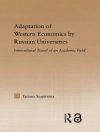Amazonia is never quite what it seems. Despite regular attention in the media and numerous academic studies the Brazilian Amazon is rarely appreciated as a historical place home to a range of different societies. Often left invisible are the families who are making a living from the rivers and forests of the region. Broadly characterizing these people as peasants Amazon Peasant Societies in a Changing Environment seeks to bring together research by anthropologists, historians, political ecologists and biologists.
A new paradigm emerges which helps understand the way in which Amazonian modernity has developed. This book addresses a comprehensive range of questions from the politics of conservation and sustainable development to the organization of women’s work and the diet and health of Amazonian people. Apart from offering an analysis of a neglected aspect of Amazonia this collection represents a unique interdisciplinary exercise on the nature of one of the most beguiling regions of the world.
สารบัญ
Identity, History and Society.- Utopias and Dystopias in the Amazonian Social Landscape.- Landscape Transformation and Language Change: A Case Study in Amazonian Historical Ecology.- Mixed Indians, Caboclos and Curibocas: Historical Analysis of a Process of Miscegenation; Rio Negro (Brazil), 18th and 19th Centuries.- ‘Sempre Ajeitando’ (Always Adjusting): An Amazonian Way of Being in Time1.- Sustainability and Development Policies.- Traditional Peoples: Introduction to the Political Ecology Critique of a Notion.- The Domestic Economy in Mamirauá, Tefé, Amazonas State.- Patterns of Resource Use by Caboclo Communities in the Middle-Lower Amazon.- Resource Management.- Agriculture Intensification, Economic Identity, and Shared Invisibility in Amazonian Peasantry: Caboclos and Colonists in Comparative Perspective.- The Use of and Access to Forest Resources: The Caboclos of the Lower Amazon and Their Socio-Cultural Attributes.- Gender and Daily Life.- Women, Gender Relations and Decision-Making in Caboclo Households in the Amazon Estuary.- ‘I Love Flowers’: Home Gardens, Aesthetics and Gender Roles in a Riverine Caboclo Community in the Lower Amazon, Brazil.- Diet and Health.- Bread of the Land: The Invisibility of Manioc in the Amazon.- Socio-Ecology of Health and Disease: The Effects of Invisibility on the Caboclo Populations of The Amazon.- Conclusion.












